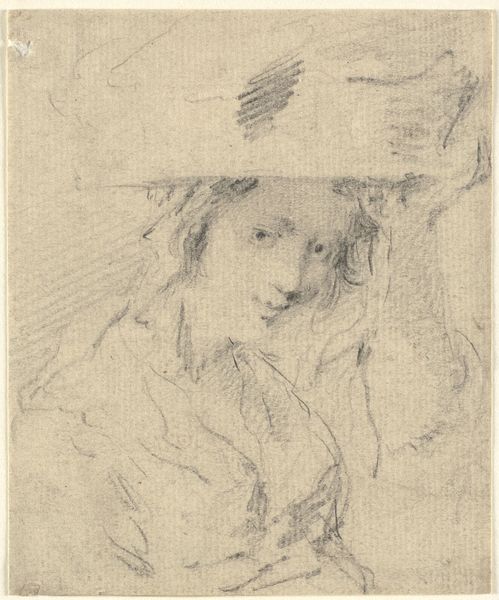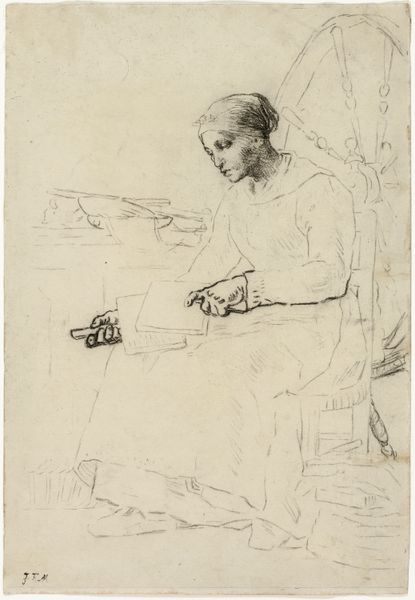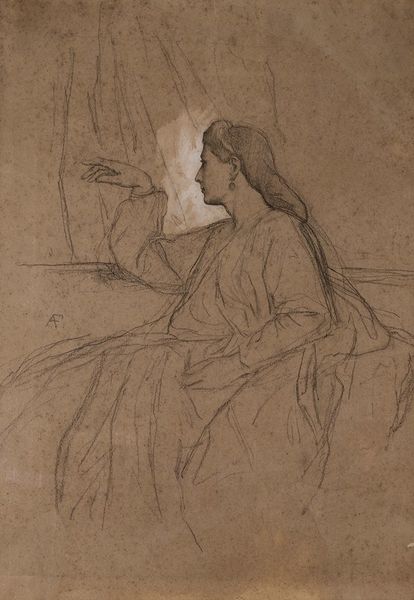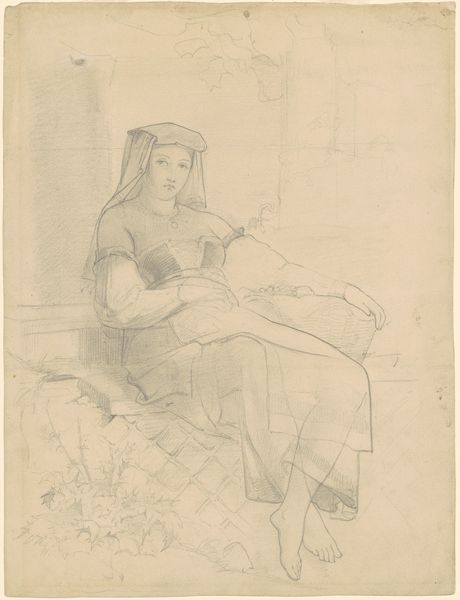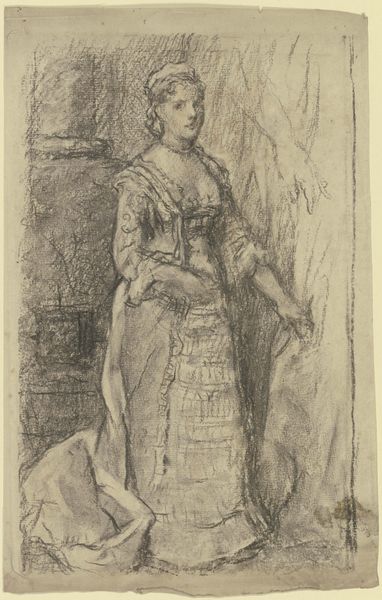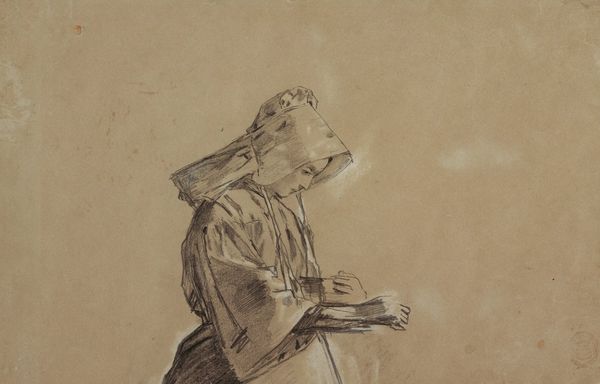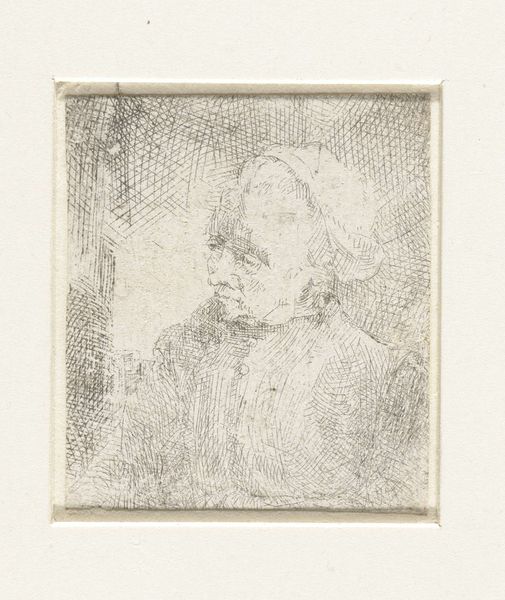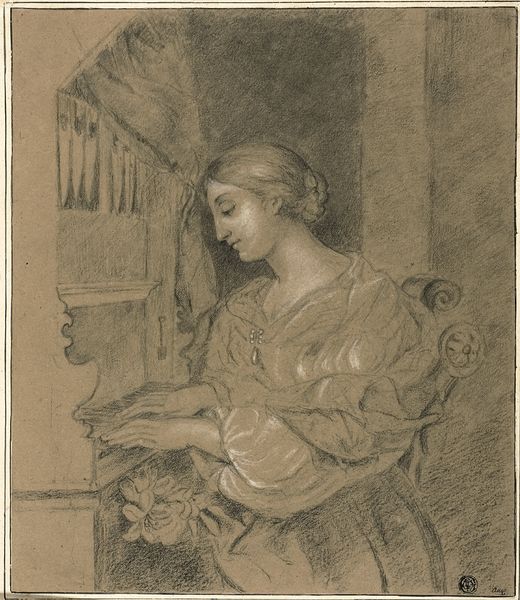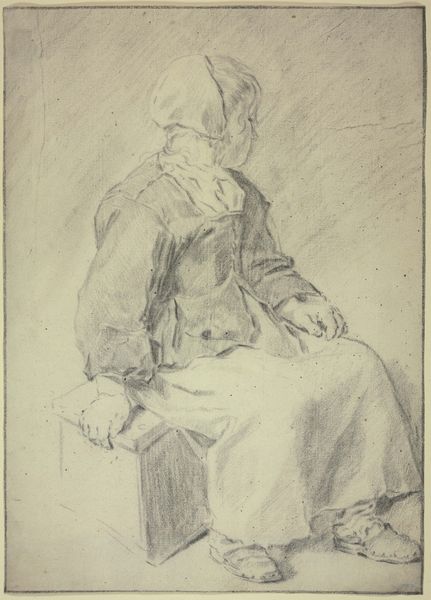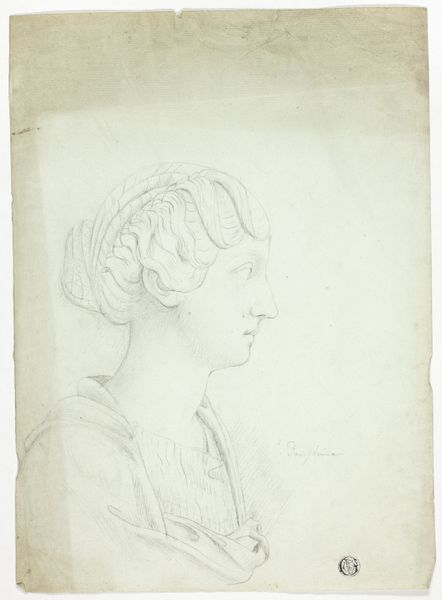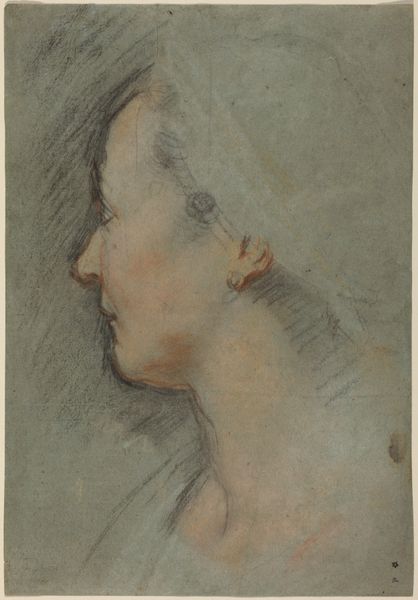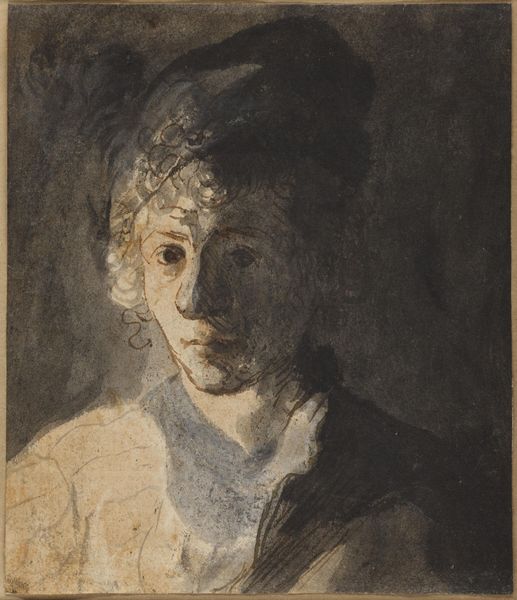
drawing, pencil, charcoal
#
portrait
#
pencil drawn
#
drawing
#
impressionism
#
pencil sketch
#
charcoal drawing
#
charcoal art
#
pencil drawing
#
pencil
#
portrait drawing
#
charcoal
#
realism
Copyright: Public Domain: Artvee
Curator: This drawing is entitled "Studie van een weesmeisje," or "Study of an Orphan Girl," by Thérèse Schwartze, created around 1885. It's rendered in pencil and charcoal. What's your initial take on this piece? Editor: Somber. The limited palette and the girl's downward gaze create a quiet, introspective mood. There’s a real sensitivity in the charcoal marks. You can almost feel the texture of the paper itself, a directness I find compelling. Curator: Absolutely. Schwartze was known for her portraits, and this work offers insight into the lives of vulnerable populations in the late 19th century. Orphanages were, sadly, a reality for many children. This study gives us a glimpse into their world. Editor: The loose handling of the materials suggests a work in progress. You see the layering, the reworking of lines. It demystifies the artistic process. I'm wondering, what sort of labor would this young girl likely be involved in? Is she mending clothes? Preparing textiles? The act of production is inherent to this image. Curator: That's an important point. While seemingly a simple sketch, the drawing might be seen as commentary on the plight of young orphans often forced into labor. Schwartze moved in prominent artistic and social circles. Highlighting the everyday struggles of vulnerable individuals aligns with broader movements seeking social reform. Editor: It’s also interesting how Schwartze emphasizes certain areas while leaving others intentionally unfinished. Her hands, for instance, blur into these almost frantic lines, yet the facial features hold firm. This highlights her experience and artistry. It's not a photographic likeness, but the feel of labor embodied by these visible hands. Curator: Indeed. The work, exhibited at a key period, engages the public in critical issues concerning poverty and labor within a period where the portrait style served as a kind of document of class and status. Editor: It serves as a subtle indictment of the system. By showcasing the means of production within the artwork, it invites us to reflect on the social and material conditions that defined this young woman’s existence. I now see this as more than a portrait study, but as active advocacy on paper. Curator: I agree. It's a compelling artwork, blending artistic skill with social commentary to open dialogues. Editor: It certainly shifted my understanding—the art here lies as much in what it reveals about materials and their ability to show realities as in its formal qualities.
Comments
No comments
Be the first to comment and join the conversation on the ultimate creative platform.
